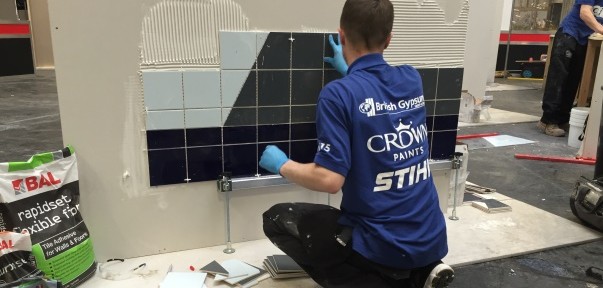As part of the five-year review of British Standards and reflecting changes within the tiling industry since 2009 – BS 5385 Part 1: 2018 has now been published.
One significant change made was to exclude the use of plywood as a background material for the direct fixing of ceramic wall and natural stone tiles.
Clause 6.1.2.7 Other sheets and boards (see also 6.2.3.3) now states:
“The use of sheets or boards that are subject to movement from changes in moisture content should be avoided. Plywood and other wood-based sheets or boards should not be used for direct tiling”.
A significant uplift in the use of tile backer boards – such as BAL Board – and a wide variation in quality of plywood available on the market has provided a solid case for the removal of plywood from the standards.
David Wilson, UK Head of Technical Services at BAL and member of the TTA Technical Committee said: “Previously it was recognised in BS5385 Part 1: 2009 that tiling direct to plywood was possible, providing this was restricted to small areas and be “installed in such a way that they provide a dimensionally stable and rigid background” the quality of plywood for tiling purposes has decreased significantly with cheaper imports flooding the market.
“While higher quality external grade plywood is still available – it is significantly more expensive.
“It is important to consider though that that wood is a hygroscopic material which means that its moisture content will change dependent upon any changes in the environmental conditions on site. Therefore, dimensionally stability of wood-based boards cannot be assured there is always a risk to installing ceramic or natural stone tiles onto plywood or other wood-based sheets,
Another technical consideration for wall tiling is weight restrictions. Plywood is deemed to have a maximum weight of tiling per m² of 30 kg compared to proprietary tile backing boards which generally are capable of supporting heavier weights per m² of tiling (As per table 3 of BS 5385-1: 2018 and the TTA Internal Ceramic Tiling to Sheets and Board Substrates document 2016).
“A competitive tile backing board market means that prices are more attractive to tile fixers and contractors. This combined with the additional features and benefits of providing background for tiling which are dimensionally stable and resistant to moisture and thermal movement. “
However, while plywood is not recommended as a background for direct wall tiling, it can still be used as a structural board when overlaid with a suitable tile backing board, particularly where installation of mechanical fixings is required e.g. for mesh backed natural stone where it is not possible to remove 75% or of the mesh backing.
Other changes to BS standards.
Previously in internal dry wall areas it was recommended that tile adhesive should cover a minimum of 50% coverage spread evenly over the back of the tile. However, driven by necessity, with the increase in the size and types of tiles i.e. larger formats and thin ceramic panels, now available of the market, BS 5385-1: 2018 advises: “Tiles with a surface area of less than 0.1 m², but which weigh more per square metre than 70% of the background’s capacity to carry the weight, should be solidly bedded e.g. the maximum weight of tile that can be supported by Gypsum plaster = 20 kg; whereas 9 mm thick porcelain tiles, which weigh approximately 18 kg/m², weigh more than 70% of 20 kg (14 kg) therefore, they should be solidly bedded regardless of their size”
Included within the scope of BS 5385-1: 2018 are large format ceramic tiles, ceramic panels i.e. tiles with a surface area >1m² (any edge length >1200 mm) and thin tiles i.e. ceramic tiles and panels with a panel thickness of ≤ 5.5 mm. To reflect this, additional changes have also been made in the minimum recommended grout joint width, dependent on the tile/panel size, e.g. the minimum grout widths vary by tile facial area – an example as follows:
- For tiles with a facial area of less than 0.1m² with no side > 600mm long, a minimum joint width of 2mm is required.
- Tiles with a facial area 0.1m² to 1m² with no side>1200mm long, a minimum joint width of 3 mm is required.
And
- Joints between ceramic panels should be increased pro-rata to panel size (e.g. for a 3m long ceramic panels the minimum required joint width between these panels is 5mm.
Not included in the scope of BS 5385-1: 2018 are:
- Natural Stone Slabs i.e. stone which is more than 12mm thick,
- Agglomerate stone,
- Metal, plastic resin, mirror or glass tiles of a similar construction
For these products it is recommended to always refer to the manufacturer of these products for further advice.
For more information please contact BAL Technical Advisory Service on 03330 030160.





